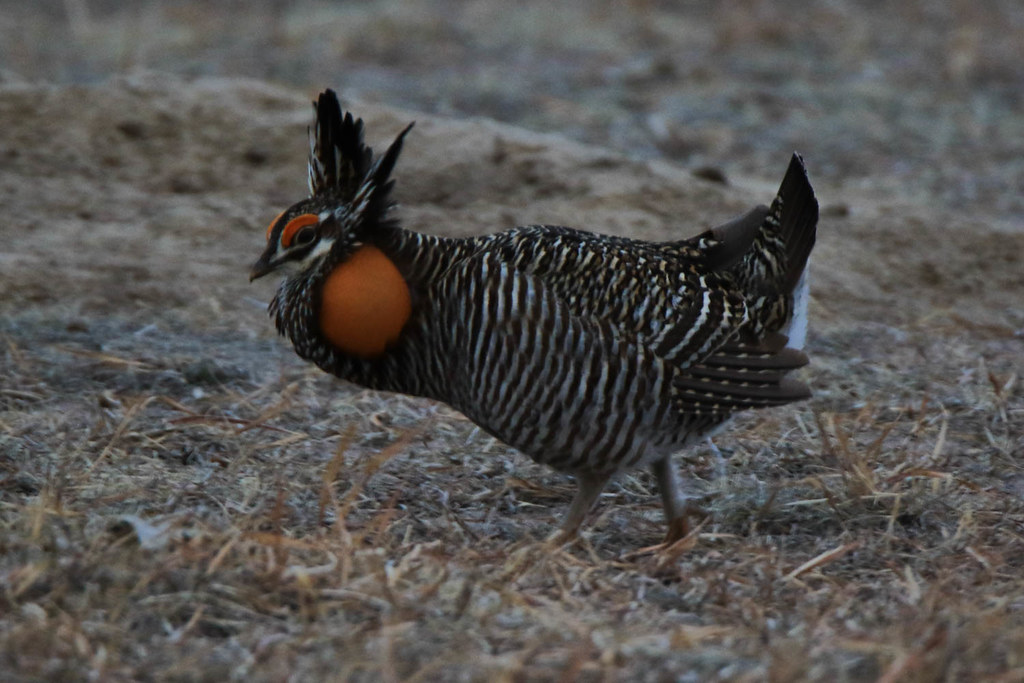
They come together in areas with low grass called leks (Swedish for "play"), where between 10 and 40 males will dance and make booming noises in the hopes of attracting some female company.
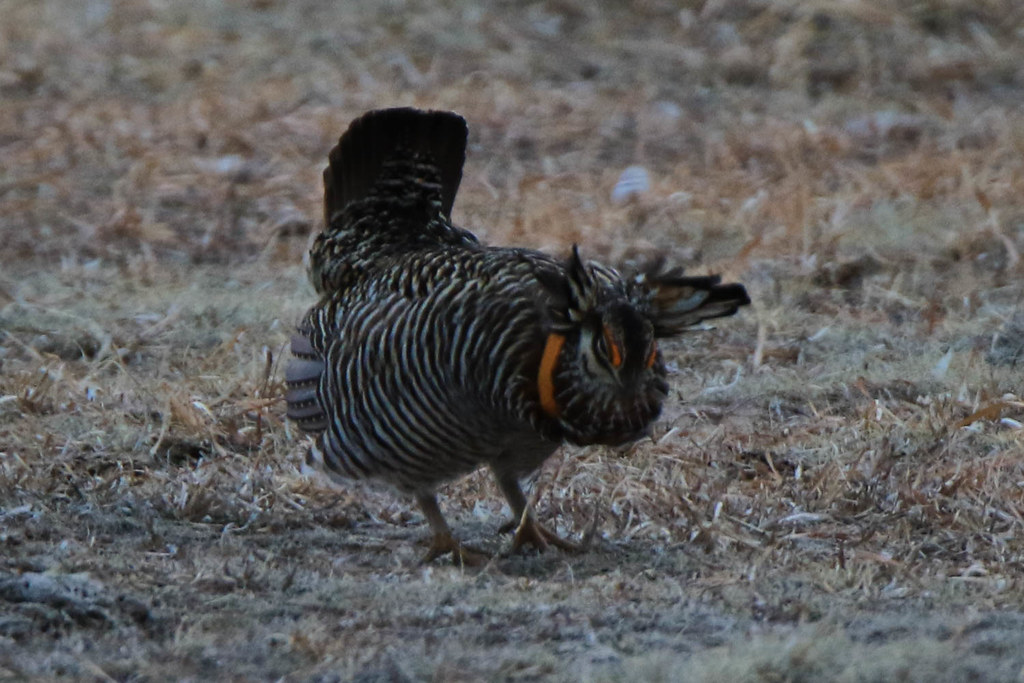
Before any females show up, there is a lot of posturing at the lek...
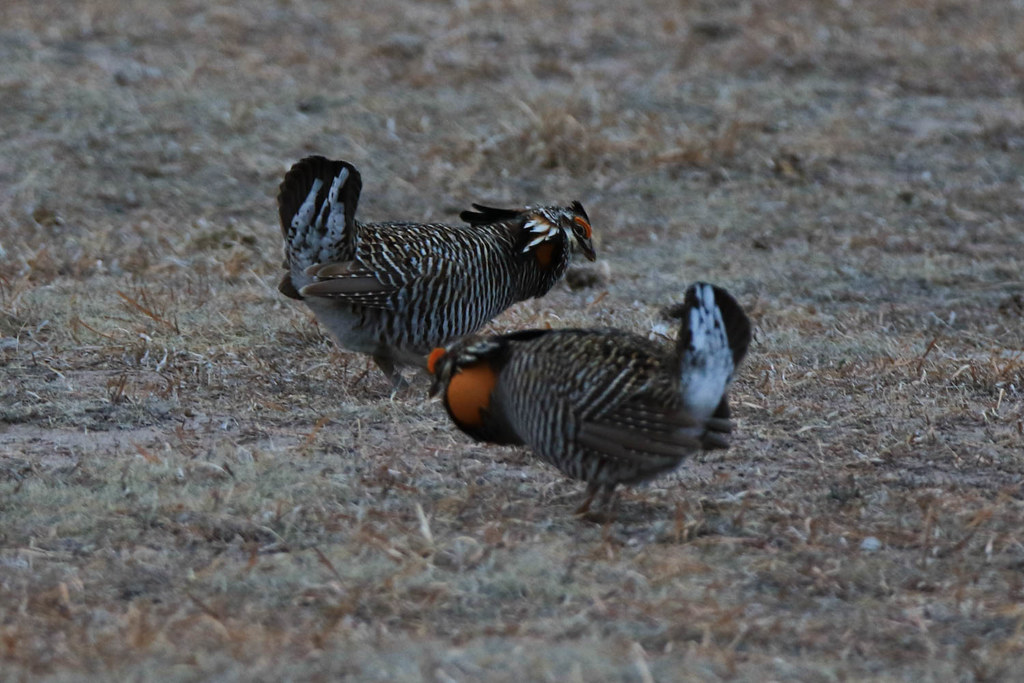
... sometimes slipping into outright aggression:
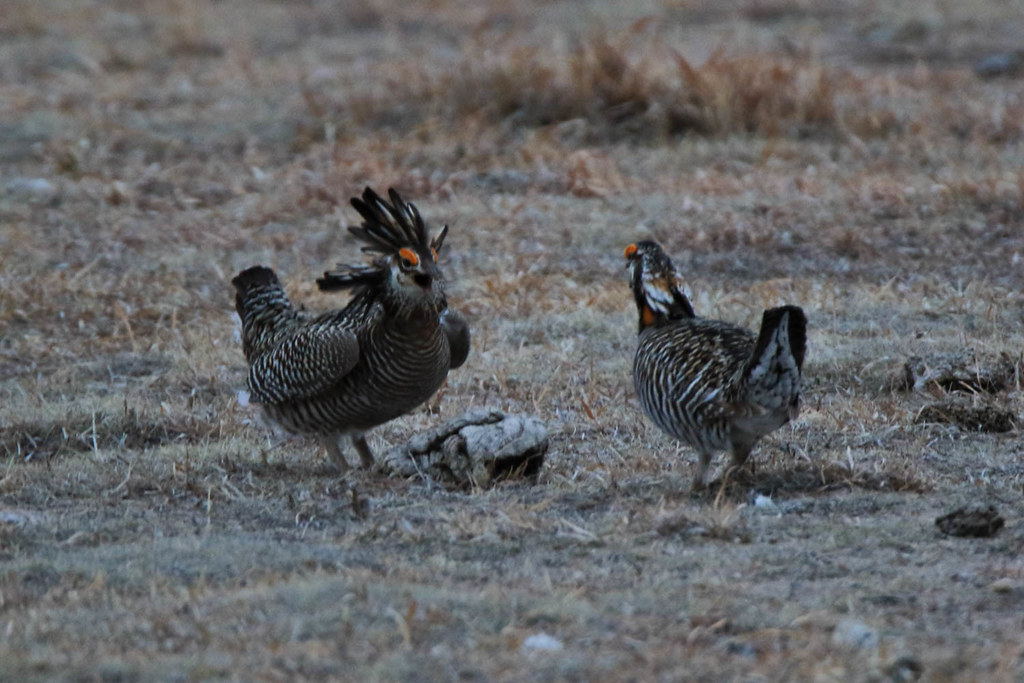
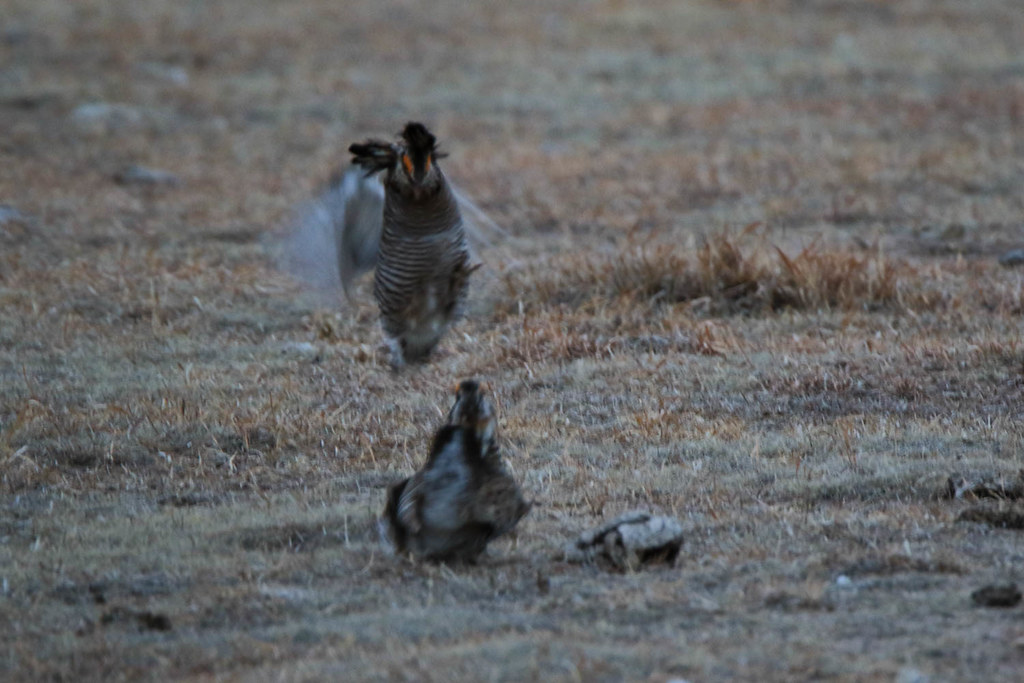
The male display consists of inflating the air sacs on the side of their neck, and raising the neck feathers called pinnae. They also stomp their feet, and make low booming noises that are heard for miles around.
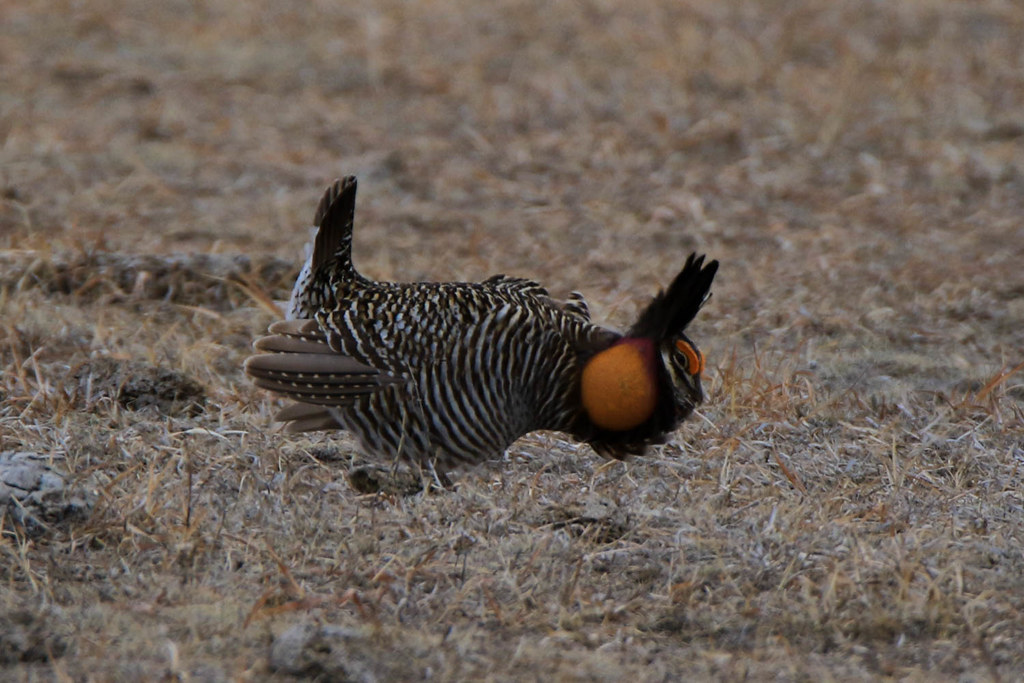
In their regular profile, the air sac is barely visible, and the pinnae are folded on the back of the beck.
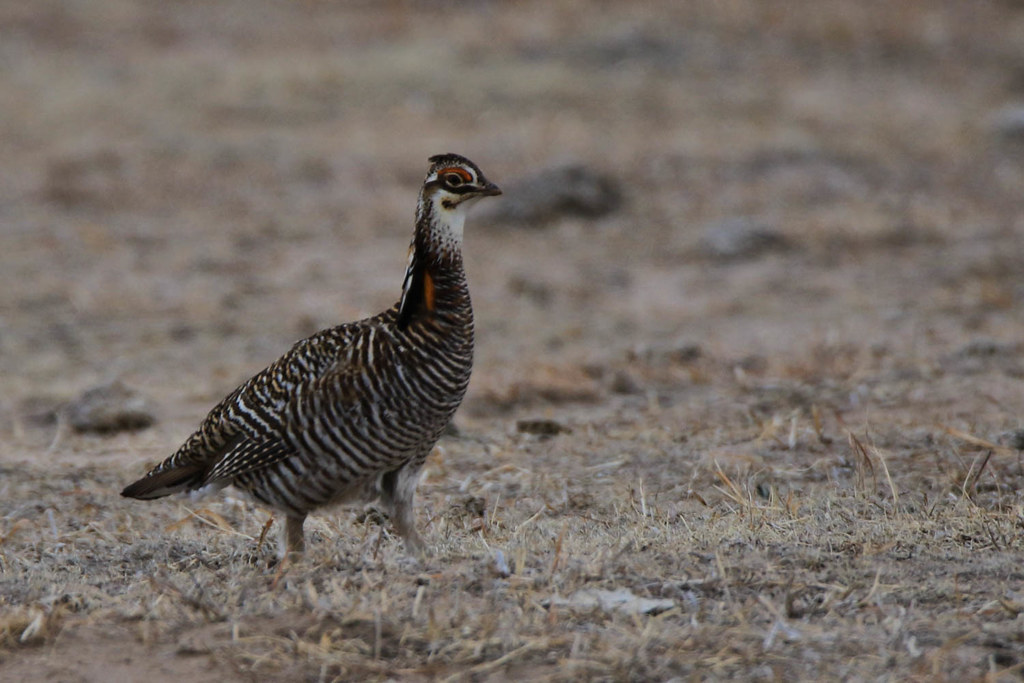

And here they are! A sole female walks into the center of the lek.
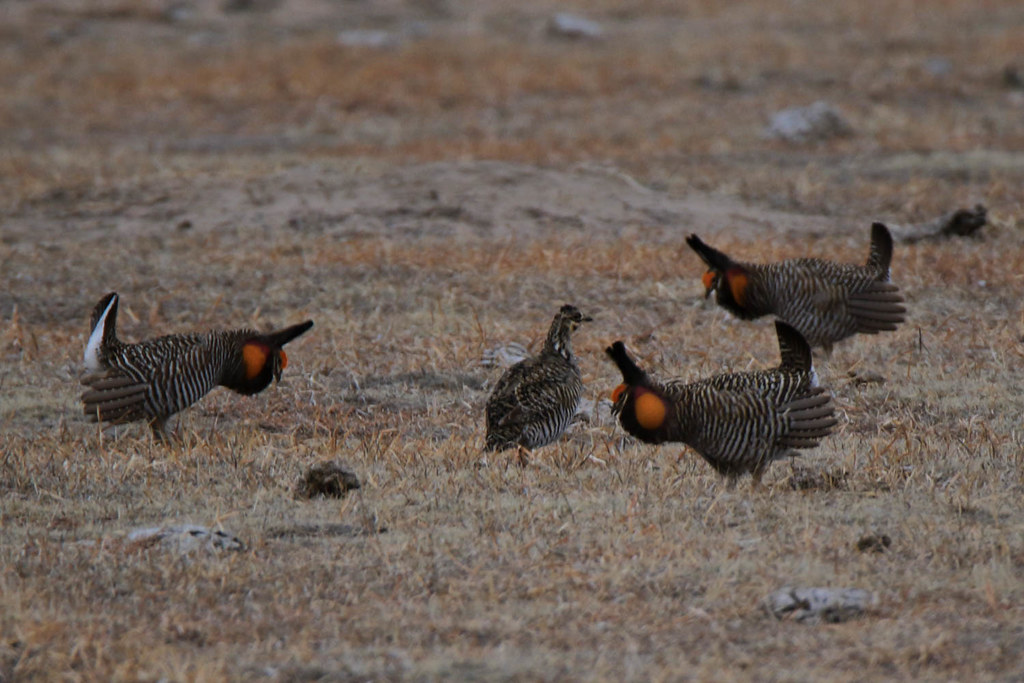
The males all go nuts, but the female keeps her regal cool. Notice a second female in the background.
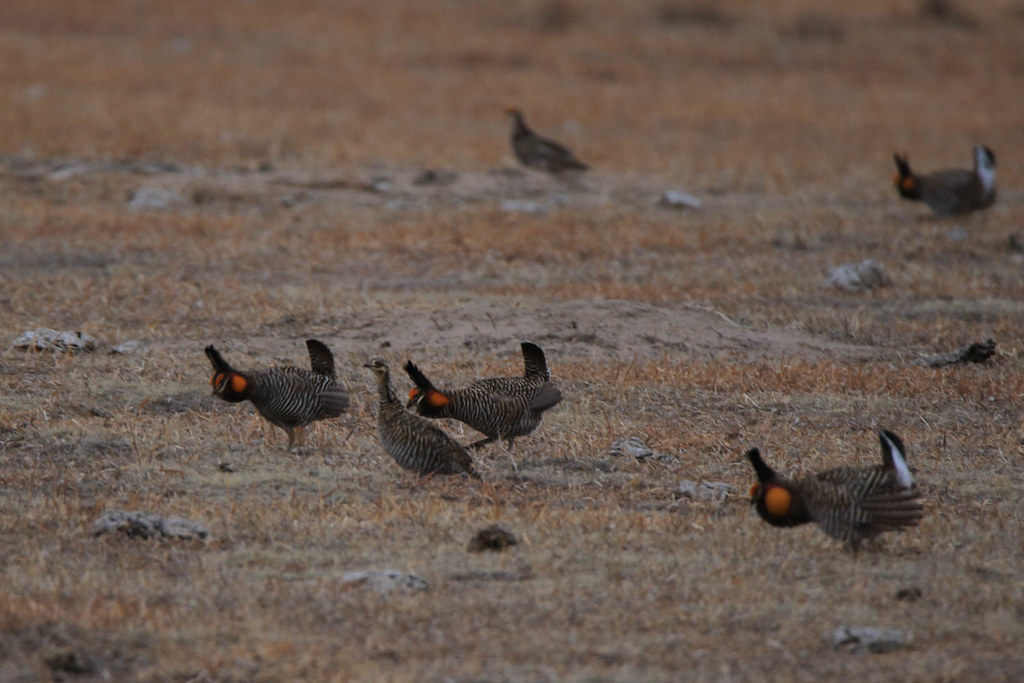
Only a few dominant males will mate. For the rest of them, it's time to deflate and try again tomorrow.
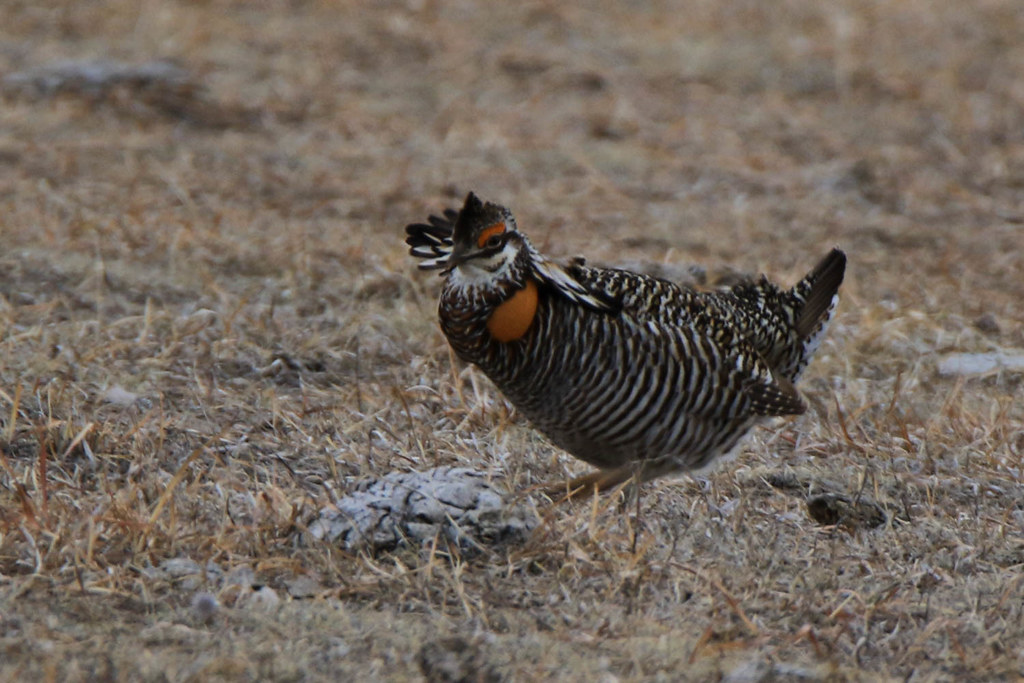

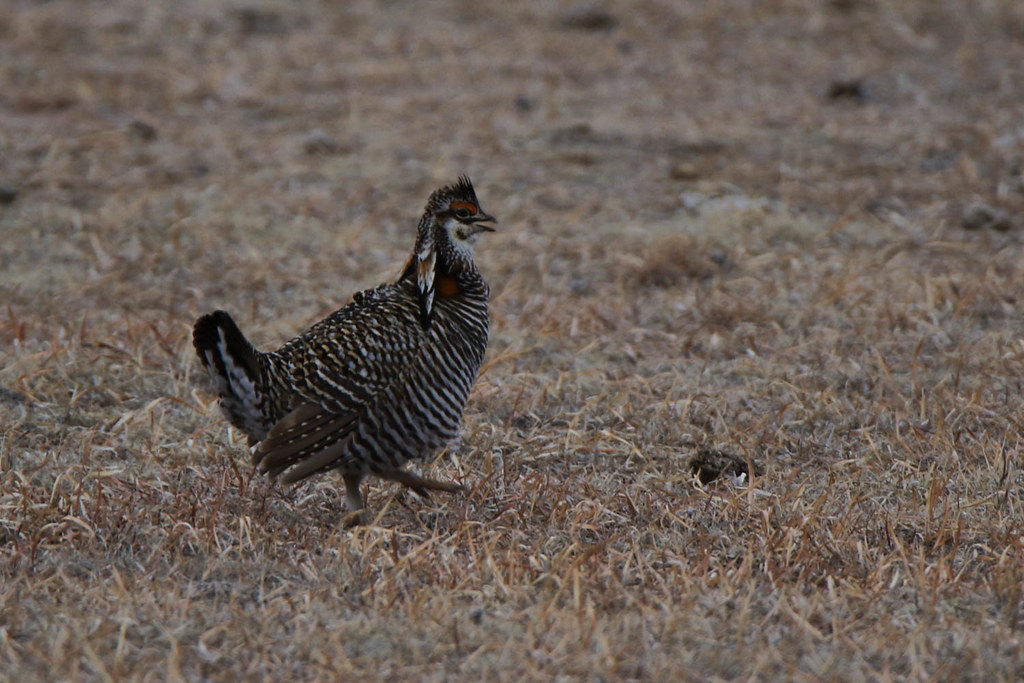
There are two species of prairie chickens - the Greater and the Lesser. The ones in these pictures are all Greater. They are both listed as Vulnerable on the endangered species scale.
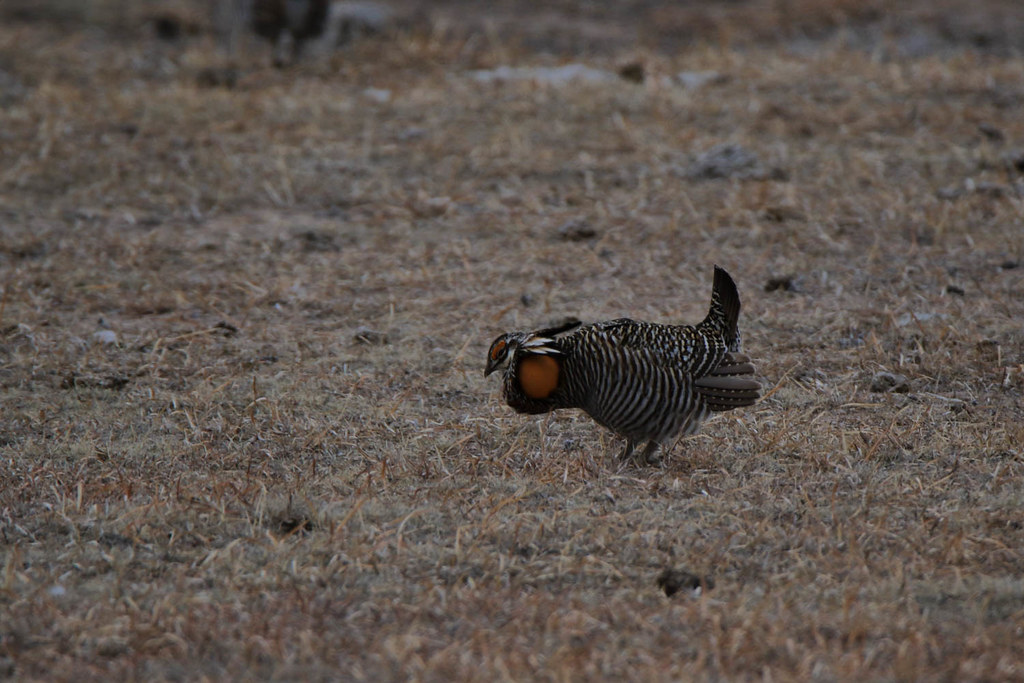
While the Greater Prairie Chickens are still fairly widespread, the Lesser are declining rapidly. I don't have any good pictures of it. The place we went to see them held a sizable lek in 2017. But by the time we visited in 2018, the lek was no longer there. We eventually did see one Lesser chicken by sheer luck, but it's sad to see firsthand how rapidly they are disappearing.


No comments:
Post a Comment